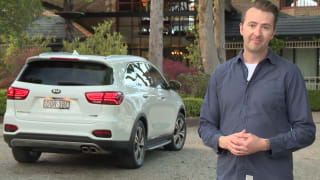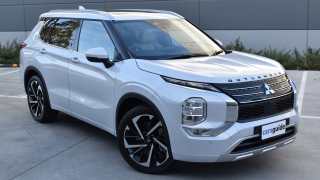The $53,990 PHEV Exceed, the car I had for a week, recently came in for a price cut, a very handy $1500. If you don't need or want what the top-of-the-range has to offer, you can start with the ES at $45,990, the ES ADAS (Advanced Driver-Assist Systems) at $47,490 and the LS at $50,490.
Read More: Mitsubishi Outlander 2019 review
Read More: Mitsubishi Outlander PHEV ES 2019 review
The Exceed rolls quietly off the line with 18-inch alloys, a six-speaker sound system, reversing camera, keyless entry and start, dual-zone climate control, active cruise control, auto headlights and wipers, partial leather interior with micro-suede inserts, electric front seats, heated and folding power mirrors and electrochromatic rear vision mirror.
Entertainment comes from Mitsubishi's new 7.0-inch touchscreen from the ASX and, truth be told, it's fairly ordinary. But it does have Apple CarPlay and Android Auto, which is very welcome indeed given the absence of sat nav.























